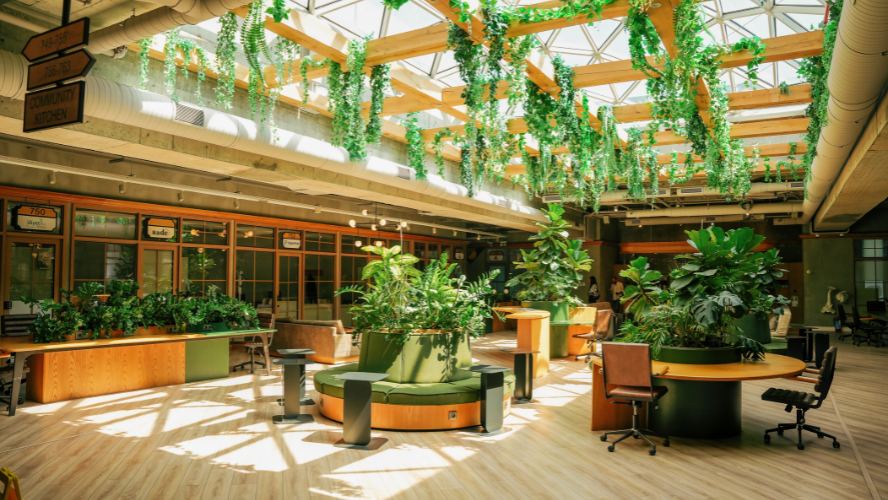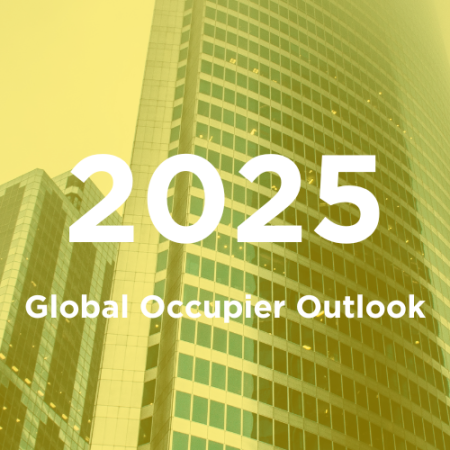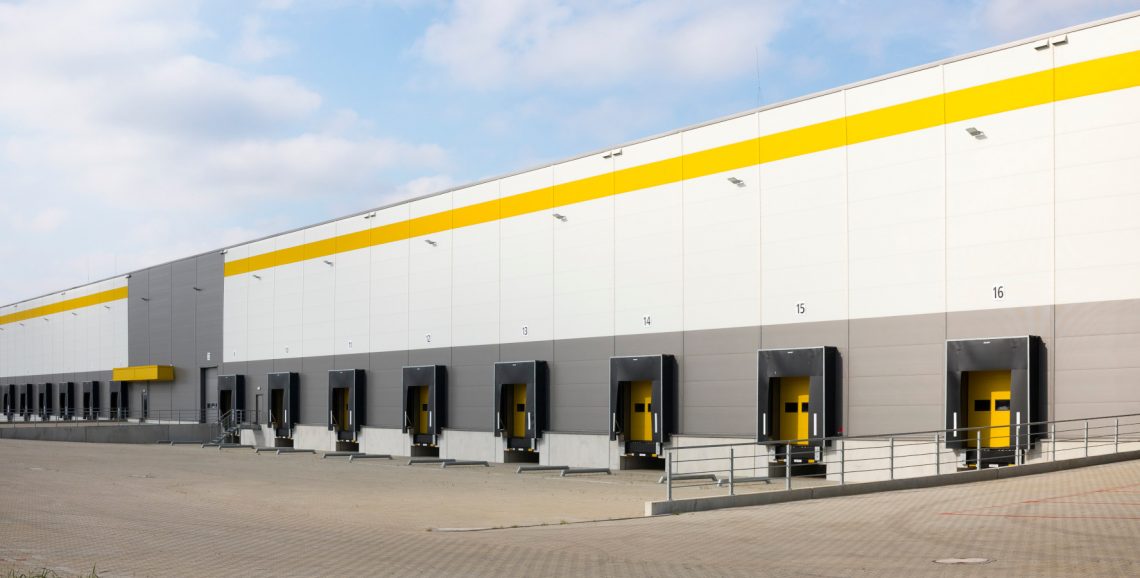The Savills Matcha Index explores the relationship between café culture, wellness and innovation in the world’s most liveable and dynamic tech hubs.
Occupiers
Navigate the swiftly evolving landscape of workplaces and workspaces
With Savills World Research and our companion publication Impacts, occupiers can explore a spectrum of evolving factors that are influencing global location strategies, the future of work, as well as real estate planning, investment and decision-making.
Explore Impacts – Savills reporting on the future of global real estate
Gain market insights that extend beyond traditional real estate metrics to include cultural, demographic, environmental and economic trends with Impacts — Savills digital and print publication. Our commitment to occupiers is to offer an informed and fresh perspective as well as a rich global context for you to stay ahead in a swiftly changing real estate market.
Real estate is evolving – are you ready to adapt?
From the rise of ultra prime-offices and wellness-led design, to the redefinition of landlord-tenant relationships and a generational shift in defining work and workplace, this year’s theme – ADAPT – is more than a call to action, it’s a roadmap for resilience.
Explore the latest Impacts reporting below.
Discover Savills World Research
Be empowered to make better real estate decisions with Savills world research. Our goal? To help you spot opportunities and reduce risk as you seek the right location and space for your business and people to thrive – both now and in the future.
Discover our latest research, including —
- Prime Office Costs – comparative analysis of office costs in prime occupier markets and properties around the world
- Global Market Makers – spotlighting the top office transactions by size across 40 world markets, revealing the companies and industries leading global leasing
- Global Sector Reports – giving in-depth insight into occupier and property sectors – including office, industrial and logistics, retail, legal, life science, engineering and more
- Investment and capital forecasts – the investment trends and sentiment across geographies and property types that influence future supply and pricing
- and so much more.
Savills – a global platform of specialists and expertise at your service
Tech companies are changing their hiring and workplace strategies as they seek to attract the best talent. Cities are adapting to meet their demands.
Global real estate investment is set to rise 15% in 2026, helped by stabilising values and demand across prime offices, residential and logistics.
Rents are expected to rise across all major real estate sectors in 2026, led by prime offices, residential and parts of retail.
The themes that will shape global real estate in 2026
Optimism is returning to real estate markets, with the economic environment and AI likely to be the greatest drivers of change in the year ahead.
Savills Tech Cities 2025: talent is the key
As AI reshapes the tech landscape, our Tech Cities Index reveals the global hubs driving innovation, attracting talent and shaping real estate.
Real estate remained the world’s largest store of wealth in 2024 despite a modest dip in total value.
Faced by labour shortages, higher costs and complex supply chains, retailers and manufacturers are turning to technology and third-party logistics providers.
Our latest Executive Nomad Index highlights 30 world-class destinations across the globe where business and lifestyle converge.
Global capability centres: a key tool in corporate talent strategies
Companies are grappling with talent shortages and rising costs. Global capability centres are emerging as a strategic solution, offering innovation and growth as well as operational efficiency.
How global cities define ‘green’ in their office markets
What makes an office ‘green’? With differing international standards and national legislation acting as a baseline, city-level policies and market dynamics often set the benchmark for sustainable office buildings.
Ecommerce sales to consumers are projected to hit $4.9 trillion in 2025 – but customers are expected to return goods worth $1.0 trillion. Retailers and logistics companies must continually reassess their property footprint to manage returns effectively.
As workforce dynamics shift, talent availability is becoming a major factor in shaping corporate location and real estate strategies.
From shifting tariff regimes to natural disasters, cyber-attacks and regional conflict, global disruption has become the new normal. How have supply chains – and industrial and logistics occupiers – had to adapt?
From the 16th century to today, the office has continually evolved in response to changing business needs, technological advances and social attitudes. Adaptability is the secret of its success.
How resilient retail is making a comeback
The retail sector is experiencing a nuanced recovery – where some formats thrive while others struggle. For investors, success now depends not just on what they buy, but how they operate what they own.
The prime office today – and in the future
Offices have become spaces for teamwork, innovation and talent development. What are the features that occupiers seek – and how will prime offices evolve in the future?
Businesses and high net worth individuals consider multiple factors when deciding where to base themselves. In addition to financial incentives, a location’s intrinsic qualities and lifestyle are increasingly important.
As global temperatures exceed the critical threshold of 1.5°C over pre-industrial levels, strategies to adapt to climate change are crucial to protecting property and prosperity.
From amenity-rich workspaces that prioritise employee wellness and inclusivity, to accredited buildings that align with sustainability goals, office occupiers’ needs continue to evolve.
Rental growth and increased take-up across most global markets signal a positive outlook for occupiers, albeit with regional and industry-specific variation.
How PropTech is elevating the tenant experience
From robot food deliveries to air quality monitoring, PropTech plays an important role in improving tenant experience as the way we use workspaces changes.
Global warehousing costs: growth slows amid regional divergence
London leads with the highest costs, while nearshoring and supply chain diversification has boosted markets in Mexico and Vietnam.
Neuroarchitecture – the application of neuroscience to built spaces – is increasingly informing decisions about workplace design, boosting employee collaboration, focus and wellbeing.
Executive nomads are still turning to world-class destinations to deliver exceptional opportunities for their businesses and families
Whilst manufacturers have spoken at lengths about nearshoring, unravelling global supply chains isn’t easy and comes at a cost.
Skilled workers are congregating in new – and often surprising – clusters around the world. The Savills Future Workforces Index reveals the existing and emerging talent hotspots across the world
A guide to the fastest‑developing cities on the planet
Asia’s cities lead the way in Savills Growth Hubs Index
How infrastructure investment brings real-estate opportunities
Over the coming decades, trillions of dollars will be spent on public transport, green energy generation, digital connectivity and sustainability projects. And where infrastructure leads, real estate follows
Developers, investors and other stakeholders are beginning to view social value in a project as an investment, not simply a cost
Global housing supply has failed to keep pace with rising populations. Boosting supply levels needs to be at the heart of any housing affordability strategy
Scale and workforce talent remain key pillars of success in the latest Savills Resilient Cities Index. But a number of smaller, nimbler cities are gaining ground on the back of strong ESG credentials.
The world’s office stock must adapt to meet the needs of employers, employees and the cities in which they work. This means its owners have challenges to face and decisions to make
Designing the world’s offices for social impact
Increasingly recognised for their societal significance, office spaces are pivotal in shaping the economic, cultural and social landscapes of cities worldwide
Out of office: adapting to new ways of working
Covid-19 changed office-based working almost overnight. But the rise of new work patterns isn’t the only factor determining future demand. How are different work cultures and changing needs shaping office availability around the world?


































